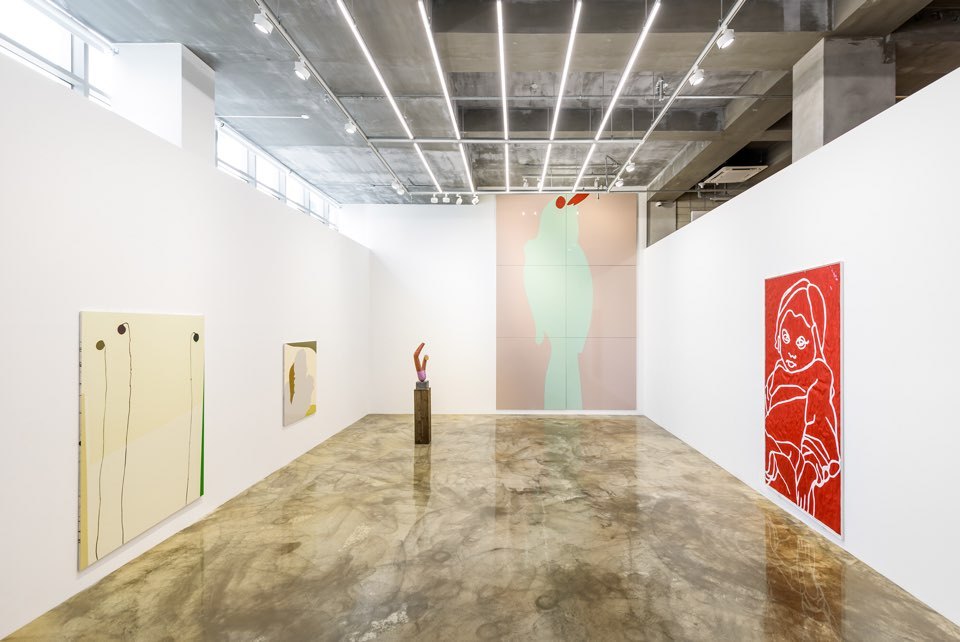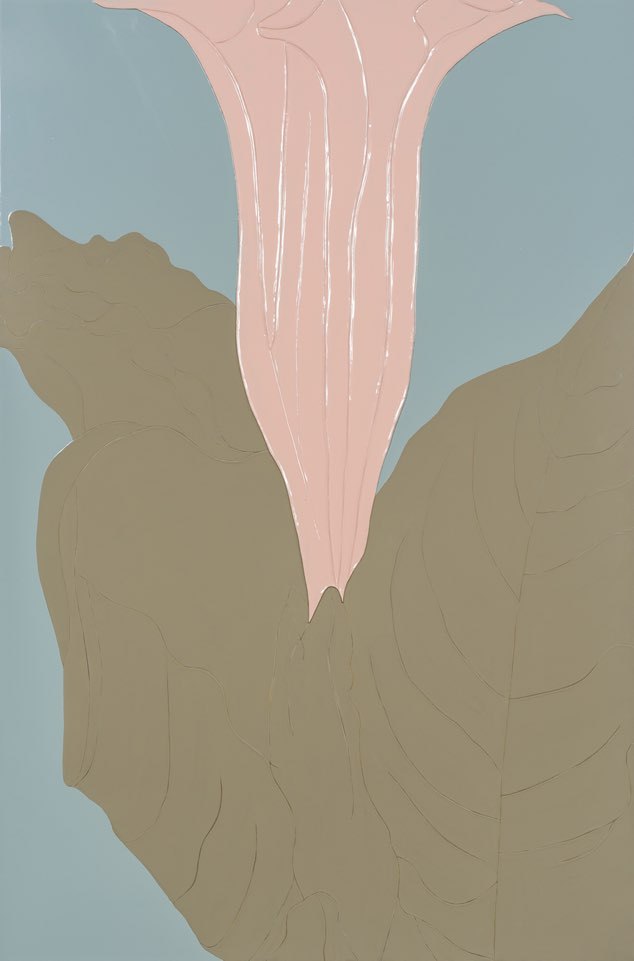Beyond 'looking’: British artist Gary Hume invites viewers to interact with his works
By Shim Woo-hyunPublished : June 4, 2019 - 18:23
In Gary Hume’s paintings, colorful tectonic plates seamlessly flow on the glimmering aluminum surface. You see yourself reflected there too. As you move around the gallery space, they seem to shimmer a little differently.
Britain’s Hume has brought his visual playground to Seoul.
Britain’s Hume has brought his visual playground to Seoul.


The artist is holding a solo exhibition at Barakat Contemporary, Barakat Gallery’s modern and contemporary art venue. It is the first-ever solo exhibition in Korea for the artist, who came to prominence during the early 1990s as a leading member of the Young British Artists alongside Damien Hirst and Tracey Emin.
Sixteen works are on display there, including “Big Bird” (2010), a large six-panel painting. Along with his paintings -- which utilize high-gloss industrial paints and aluminum panels as canvases -- the exhibition also includes two sculptures by Hume: “Sculpture 1” and “Sculpture 3.”
“I am not after making a painting that describes me,” Hume said during a press conference at Barakat Contemporary on Tuesday, a day ahead of the exhibition opening.
Hume, often known as the quiet one among the group of celebrated artists who studied at Goldsmiths College in London in the 1980s, added that his ego is not in his paintings.
Hume encouraged viewers to experience the exhibit likewise: Drop your ego for a minute and just “disappear” or let the work take you over.
To properly approach his painting, according to the artist, gallerygoers should take time to look at his pieces carefully -- to see beyond what is represented on the canvas.
Whether to reach clear conclusions about his works and what they mean is up to the viewer. Either way, it’s fine with the artist. But if you happen to think of more questions during the viewing experience, it’s better, the artist seemed to be saying.
For this unorthodox painter, the relationship between his paintings and the people who see them is more important. For Hume, art is “noneducational.” It “has no purpose and has no concrete meaning that has to be proven,” he said.
The subject matter in his works is rather trivial -- for example, the flimsy sprouts in his garden in “Untitled” (2019).
Painting daily, Hume creates works that reflect his personal experience. “Big Bird” depicts one bird in a large flock he encountered while traveling.
Sometimes, the artist becomes confessional, as in “Mum on the Couch” (2017) -- a painting of his mother, Jill Henshaw, who has dementia.
The painting shows his beloved mother leaning against an uncomfortable pillow, and Hume said it expressed his affection for her and the sadness he felt about her condition.
However trivial and insignificant they may sound when the paintings’ origins are revealed, Hume’s paintings do have layers. This is what allows viewers to have interesting encounters with them, according to professor Andrew Renton, who also spoke at the press conference.
Renton added that Hume’s paintings “answer back” in a very physical way, referring to their physical qualities -- the reflective surfaces created with high-gloss industrial paints and the waviness that Hume creates, for instance.
The Gary Hume exhibition runs through Aug. 4 at Barakat Contemporary in Seoul.
By Shim Woo-hyun (ws@heraldcorp.com)








![[Graphic News] More Koreans say they plan long-distance trips this year](http://res.heraldm.com/phpwas/restmb_idxmake.php?idx=644&simg=/content/image/2024/04/17/20240417050828_0.gif&u=)
![[KH Explains] Hyundai's full hybrid edge to pay off amid slow transition to pure EVs](http://res.heraldm.com/phpwas/restmb_idxmake.php?idx=644&simg=/content/image/2024/04/18/20240418050645_0.jpg&u=20240419100350)






![[From the Scene] Monks, Buddhists hail return of remains of Buddhas](http://res.heraldm.com/phpwas/restmb_idxmake.php?idx=652&simg=/content/image/2024/04/19/20240419050617_0.jpg&u=20240419175937)

![[KH Explains] Hyundai's full hybrid edge to pay off amid slow transition to pure EVs](http://res.heraldm.com/phpwas/restmb_idxmake.php?idx=652&simg=/content/image/2024/04/18/20240418050645_0.jpg&u=20240419100350)

![[Today’s K-pop] Illit drops debut single remix](http://res.heraldm.com/phpwas/restmb_idxmake.php?idx=642&simg=/content/image/2024/04/19/20240419050612_0.jpg&u=)